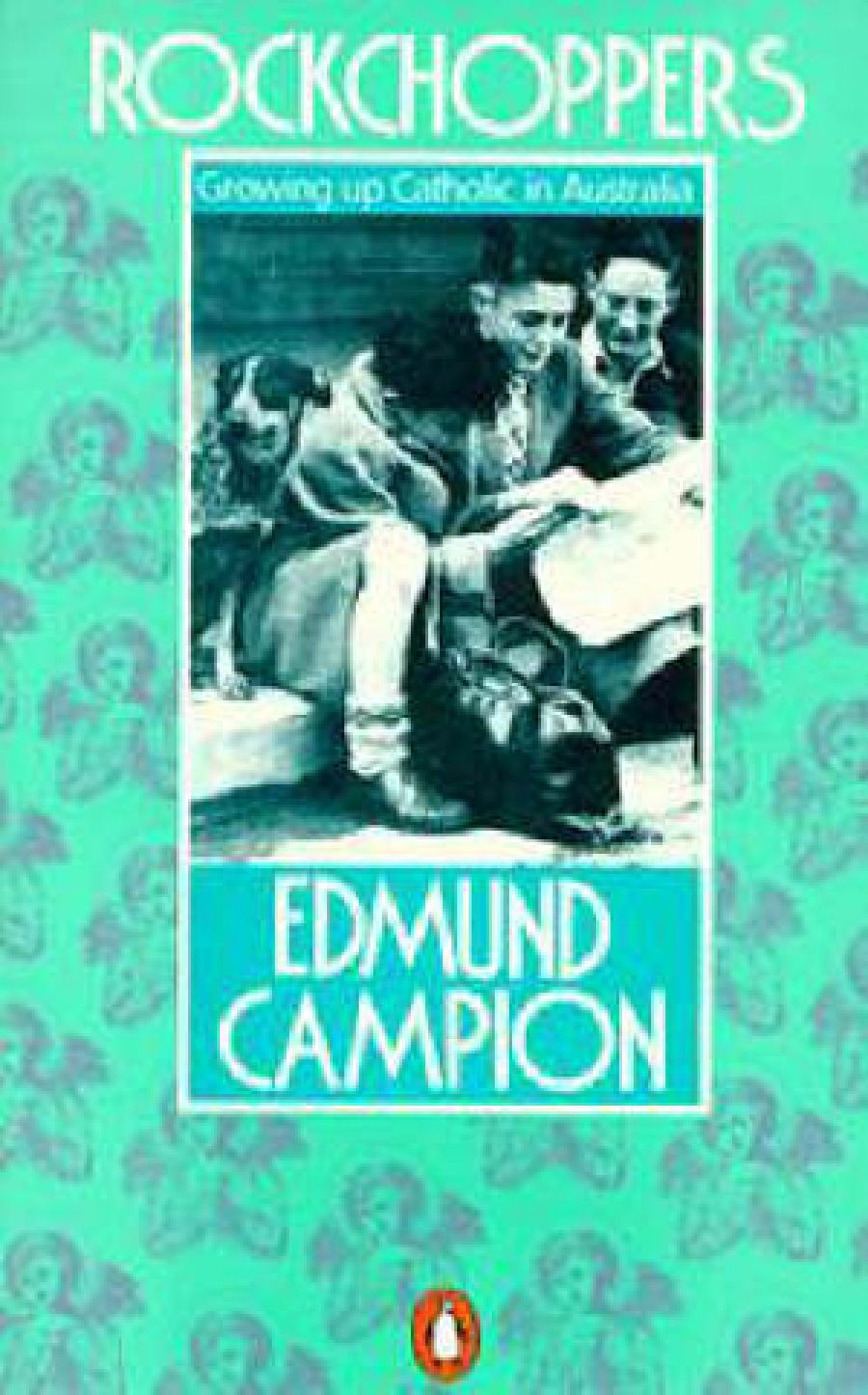
- Free Article: No
- Contents Category: Australian History
- Review Article: Yes
- Online Only: No
- Custom Highlight Text:
The decisive influence on Australian politics and culture has been the fact that our society has always included a large minority who, even if they considered themselves British, were definitely Irish and not English. The fact that this minority has been Catholic and, as a result, has felt itself discriminated against, has shaped the church into an Irish rather than a European mode, so that, as Campion points out, not only was to be Irish to be Catholic, but to be Catholic was to be Irish.
- Book 1 Title: Rock Choppers
- Book 1 Subtitle: Growing up Catholic in Australia
- Book 1 Biblio: Penguin Australia, 241 p., $6.95 pb.
The contribution of the Irish to Australia, which includes both a sceptical sense of humour and a sense of solidarity, as well as an esteem for liquor and male chauvinism, has been restricted by the separateness of the Catholic and Protestant communities. This in particular limited the influence of Catholic intellectuals in Australian life, except as they were represented in the semi-Bohemia of journalists, lawyers and artists which had a strong Irish component.
The post-war growth of Australian universities, which became the avenue of entry to all the professions and a great part of white-collar occupations, brought an increasing number of Catholics and Protestants into close contact with each other at the same time that the Australian Catholic church was being changed by the influx of large numbers of migrants from the traditions of central and European Catholic traditions, that church-state relationships were challenged by the Labor Split, and that the Protestant churches found a social conscience. Campion records the experience of the generation of Catholics who came to maturity during this period.
Paradoxically, he seems to regret the failure at this time of plans for a Catholic university in NSW. While such an institution would certainly have promoted a flowering of intellectuals within the Catholic community, it would have deferred that mixing with non-Catholics which has been such an important part of the ferment of the postwar years. Certainly, the absence of a Catholic university has not apparently diminished the scholarship of Catholics of which this book is one example, and which enables us to speak of Catholic intellectuals in the Australian community in a way which would be absurd if applied to Protestant intellectuals.
Campion, rightly I think, sees the DLP as the last product of Catholic separatedness and clericalism, and its failure as the final blow to the unquestioned authority of the bishops and the condition which has allowed Australian Catholics to live their faith fully in the world. Australia is certainly better for the change.
In Rock Choppers, Campion has constructed around an autobiographical core a book which is both a history of the Catholic church in postwar Australia and a major contribution to our cultural history.
The heart of the book is the author’s own deep commitment to his priestly vocation, which he sees as a timeless privilege descending from the centuries of his predecessors. In explaining today’s church, he is able to move easily back to the eleventh and twelfth centuries – seemingly his favourites – and beyond, but never with any sense of dry scholasticism. The past is as real to him as the present, but only because he brings it to bear on the problems of today.
His first chapter, ‘A People’s Religion’, grounds his story thoroughly in the story of the Irish, first at home and then in Australia. In this he explains not only the support the people derived from their parish, but also the way this strength was derived from a defensiveness and a sense of injustice which, if it could produce a rich cultural life and a grandeur derived from the sense of the past, could also descend to banality. This ambivalent inwardness and introversion gave an edge to the conflicts – over authority in the church, over politics and the Movement, over the church’s responsibility to a wider society – which provide the subjects of the latter part of the book, as well as giving rise to the bigotry described in his second chapter and most evidenced in the Campbell of the Rock, the journal which expressed the fantasies of earlier generations of Protestants.
While the autobiographical core of Campion’s work accounts for its perception, it may also explain its few limitations. Others might have a different view of the continuities he asserts in Catholic practice, and his account of the Irish sources of Australian Catholicism, although recognizing the consequent attrition of the English Catholic tradition in Australia, ignores the neglect by the Australian church of such of its constituents as Catholics from the Scottish highlands. These, however, are minor blemishes.
After surveying the intellectual, political and theological ferments of his church over the last thirty years, Campion finishes his book with a chapter on Woolloomooloo – ‘Wherever a priest walked in Woolloomooloo, he was sure of a friendly greeting’ – in which he describes how his experience there at a time of social change led him into direct political action, and an Afterword on the cathedral church of Chartres, where he finds the two thousand years of the church’s work with lay and cleric still alive and making all as one. These two chapters bring the book’s various themes into a similar unity.


Comments powered by CComment